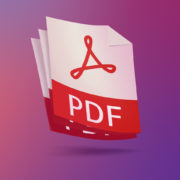The Best Way To Increase Web Hosting Energy Efficiency
It’s no secret that energy is a hot topic, and for good reason. Rising costs and the imminent climate crisis mean that cutting back on energy use is becoming a higher concern for businesses and individuals alike. Websites have an important role to play in this discussion, as data centres are projected to contribute 1% of the world’s total energy use.
A website’s performance and design are likely to constantly take precedence over other considerations. After all, what’s the point of having a website if it doesn’t accomplish its goals and engage its visitors? However, this does not mean that energy use should be ignored.
This obligation falls squarely on the shoulders of the nation’s data centres. It is important for website owners to be aware of the energy-saving factors and to consider these when selecting or switching web hosting and website building companies. If we don’t change our ways, we’ll continue to rely on inefficient and environmentally damaging solutions that drain our wallets and compromise our performance.
What Exactly Is Web Hosting?
Running a website on the World Wide Web involves renting or purchasing space on a server. A server is required to host website content, including HTML, CSS, and graphics.
What Does It Mean To Say That You Are A Server?
A server is a machine that acts as an intermediary between your website and the rest of the internet. Web hosting service providers, as the name implies, have the servers, connection, and other services necessary to host websites.
They cater to a wide range of hosting requirements, from personal blogs to huge corporations, by providing a selection of hosting packages.
With an online presence, trustworthy web hosting is vital. These days, there are practically hundreds of web providers available who offer thousands of different web hosting services to their customers.
Plan types range from the free with few options to the pricey business-oriented web hosting providers.
It’s important to think about how you intend to use your website and how much money you have set aside for hosting.
To ensure that your website loads swiftly and reliably for your visitors, you need to select the proper hosting plan.
Most businesses these days rely on their website to generate sales and business leads; this is a trend that is expected to continue.
It doesn’t take long for people to get to websites that don’t work right, but if there is a problem with it, they won’t stay long.
In the meantime, they’ll be browsing elsewhere for a site that works properly and can give exactly what they’re looking for.
How To Improve The Energy Efficiency Of Web Hosting Services?
1. Monitoring The Capability Of A System
Overcapacity should not be buried behind a blanket of oblivion. No matter how much traffic you get, you’ll always need a flexible infrastructure to keep things running smoothly for your users.
However, this should not be used as a justification for wasting resources on a regular basis.
A good place to start is by making sure you can see your resources and keeping track of how they are being used.
For those who have been using the same hosting provider for a long time, they may be squandering a lot of resources without even realising it.
Dedicated server hosting, for example, provides high levels of protection and can be a good alternative if your website requires all the capacity.
However, if you see that your site isn’t making full use of your server’s resources, you may want to upgrade.
If this is the case, cloud hosting is an excellent, more energy-efficient solution.
In the cloud, instead of paying for a single machine and the energy required to run it, data will be stored on a number of servers that may be located in different regions.
It’s easy to raise or decrease the amount of capacity you have available, so if you know that your website traffic is going to increase tomorrow, you may buy extra capacity now.
This is usually done in your dashboard, making it simple.
Ensuring that you know how much of your server’s capacity is actually in use at any one time and anticipating when this might go up may help you optimise how much of that resource you actually need.
Your site’s energy consumption will be reduced, and you’ll also save money.
2. Acknowledging The Credentials Of A Data Centre
Colocation and data centre operators have some control over the amount of energy consumed by hosting.
To reduce their carbon footprint, website owners can do so much by keeping an eye on their chosen data center’s operational efficiency and environmental friendliness.
Non-computing processes, such as cooling the centre, can easily consume as much energy as the computers themselves in inefficient data centres.
Cutting-edge immersion cooling technologies are being developed aggressively by the market to correct this imbalance, but not all centres are as committed to using this new technology as others.
Check to see if your service provider is making progress in this area, or if they plan to in the future.
Additionally, you may be able to receive information about the age of the equipment that you are using.
A higher emphasis is being placed on performance per watt in the development of future servers’ processors.
Each watt of power consumed by these processors equates to greater computing power being delivered. Servers will be able to deliver more on a smaller amount of energy, as well as minimise the amount of energy needed to cool their centres, as a result of this.
Your website’s energy consumption can be controlled even if you can’t cut it further due to any reason.
There are data centres that use renewable energy in some or all of their operations.
Make sure to check your provider’s website to see if this is an option because it’s a simple way for you to contribute to the greater good.
3. Keeping Abreast Of Current Events
There are constantly fresh and fascinating developments in this field. Microservers have become more efficient over the past few years as a result.
To make the most energy-efficient choices, you’ll need to stay on top of industry improvements on a yearly basis at the very least.
You should keep a close eye on the development of serverless platforms.
You only pay for the infrastructure you really use when your software automatically spins up the quantity needed when the site is busy and instantly spins down when the site is quiet.
The cloud’s energy-saving qualities will be taken to a new level thanks to this immediate scaling, which doesn’t require the website owner to log into the dashboard and manually make changes.
In the approaching years, these kinds of advancements will only grow in relevance and cost-accessibility.
It would take a lot of time and effort to switch hosting providers or packages every year. As the data is transferred to the new machine, it’s possible that the website will be unavailable for a short period of time.
It’s not as difficult as you may think.
A switch to a more energy-efficient solution might be welcomed with joy if the end-user is made aware that they may suffer disruptions during particular times of the day.
If the move is correct, then it’s critical that it be carried out.
Final Thoughts
To make this decision, you’ll need to know where your data is stored and how it’s accessed.
Energy-saving solutions must be kept in mind by data centres and website owners, who should keep an eye on these credentials and the options that are available if they want to minimise their consumption levels.
Web hosting could become more energy efficient over time as a result of these improvements.
If you want to know more about Web Hosting, you can check out MediaOne Marketing’s articles on Complete Guide To Web Hosting In Singapore.
















